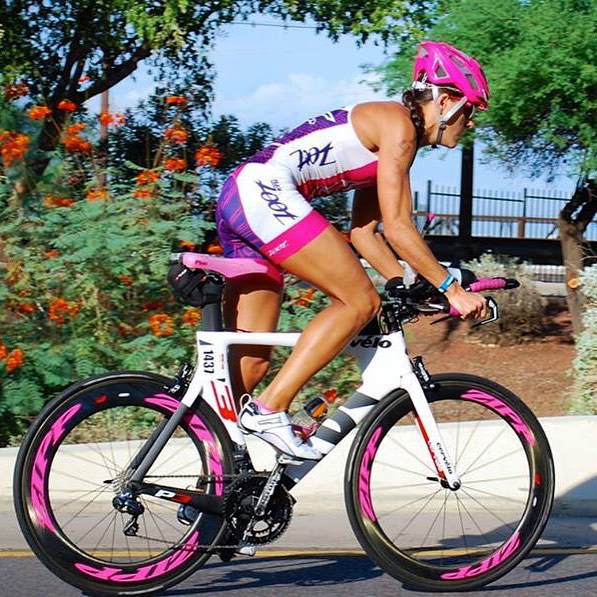With our climate and variety of road routes and trails, Arizona is a great place to be if you’re into cycling or mountain biking. Here at Spooner Physical Therapy, we see quite a few cyclists and mountain bikers and love to help them get stronger and recover from all kinds of bicycle injuries.
Some of the common causes for complaint we see in our clinics are hand and wrist injuries, or pain or numbness while riding. We asked Holly Hussey, MOTR/L, CHT, who specializes in hand therapy and upper extremity rehabilitation, to offer her suggestions for avoiding and recovering from these types of cycling injuries.
Whether riding is already part of your routine, or you’re just starting out, keep reading to get Holly’s top tips.
On the Bike: Make Sure You’re Properly Positioned
Having a professional bike fitter set up your bike for the optimal positioning for your body is a crucial step to enjoying the riding life. A bike fitter will identify the precise measurements and angles for all the contact points between your body and your bike—including your hands.
When your bike is set up correctly, your wrists will be in a neutral position, without too much flexion or extension, Holly says. “The main thing is to avoid putting pressure on the ulnar part of your hand. The most common wrist and hand injury when it comes to biking is damage to the ulnar nerve, called Guyon’s canal syndrome or handlebar palsy.” Holly explains that this happens where the ulnar nerve passes between two bones at the base of the hand and extends to the tips of your ring and pinky fingers.
Try this to locate the ulnar area: “On the pinky side of your hand, feel the corner of your palm in the spot right before you get to the wrist area, and you’ll feel a bone. The ulnar nerve travels right under that bone, so that’s where you want to avoid pressure when you’re gripping your handlebars.”
With the wrong positioning or prolonged pressure (due to overtraining or longer rides), that nerve can become compressed and the bones surrounding the nerve can even become fractured. “Ulnar claw” is a more extreme condition that happens when the nerve has been crushed, leading to a deformity in the ring and pinky fingers.
What should you watch for? “If you start to feel numbness or tingling in that area, you need to change your positioning,” Holly says.
She also recommends wearing cycling gloves with padding to protect the ulnar nerve.
Holly also says to make sure to have appropriate placement of your shifters and brakes, so you have a slight bend in the thumb joints. If you’re stretching out or reaching with your thumb too much, that can cause trouble with your median nerve area (where carpal tunnel syndrome can occur).
Off the Bike: Focus on Mobility, Strength and Stretching
Taking a full-body approach is best for preventing hand and wrist troubles, Holly says. Because the ulnar nerve starts in the neck, you have to have adequate strength and thoracic (or back) mobility, and strong, flexible shoulders. “Make sure your entire kinetic chain is strong so you don’t overcompensate,” increasing your risk of irritating the ulnar nerve.
And if you’re a mountain biker, recognize that you’ll use more grip strength and different muscles than if you were road biking and should strengthen accordingly. “You can do putty exercises for your grip, in addition to exercises for strengthening your shoulders and rotator cuff, upper body and core,” Holly says.
Read more about the connection between the wrist and neck in Is It My Neck or My Wrist? on the Spooner blog!
When to Seek Help From a Physical Therapist
Holly recommends seeking help if you can answer “yes” to any of these questions:
- Is the pain, tingling or numbness always present, whether you’re on or off the bike?
- Does your motor function not return, even after changing your position?
- Do your symptoms keep coming back?
- Did you start experiencing pain, tingling or numbness in your hands and wrists after a crash or fall?
Your therapist will start with an overall assessment to see how your entire body moves. She may ask you to bring in your bike, or for a photo or video of you on the bike.
In addition to movement exercises to improve strength and mobility, she will work on reducing the numbness or tingling and calming the nerve, using methods like heat and ultrasound.
Most importantly, your therapist will know how to help you train your body to be its best, so you can get healthy and back on the bike as soon as possible.
Learn more about Hand Therapy at Spooner Physical Therapy. Ready to schedule an appointment? Click Here to schedule an appointment or complimentary movement screen with a Spooner physical therapist at one of our locations throughout the valley.

